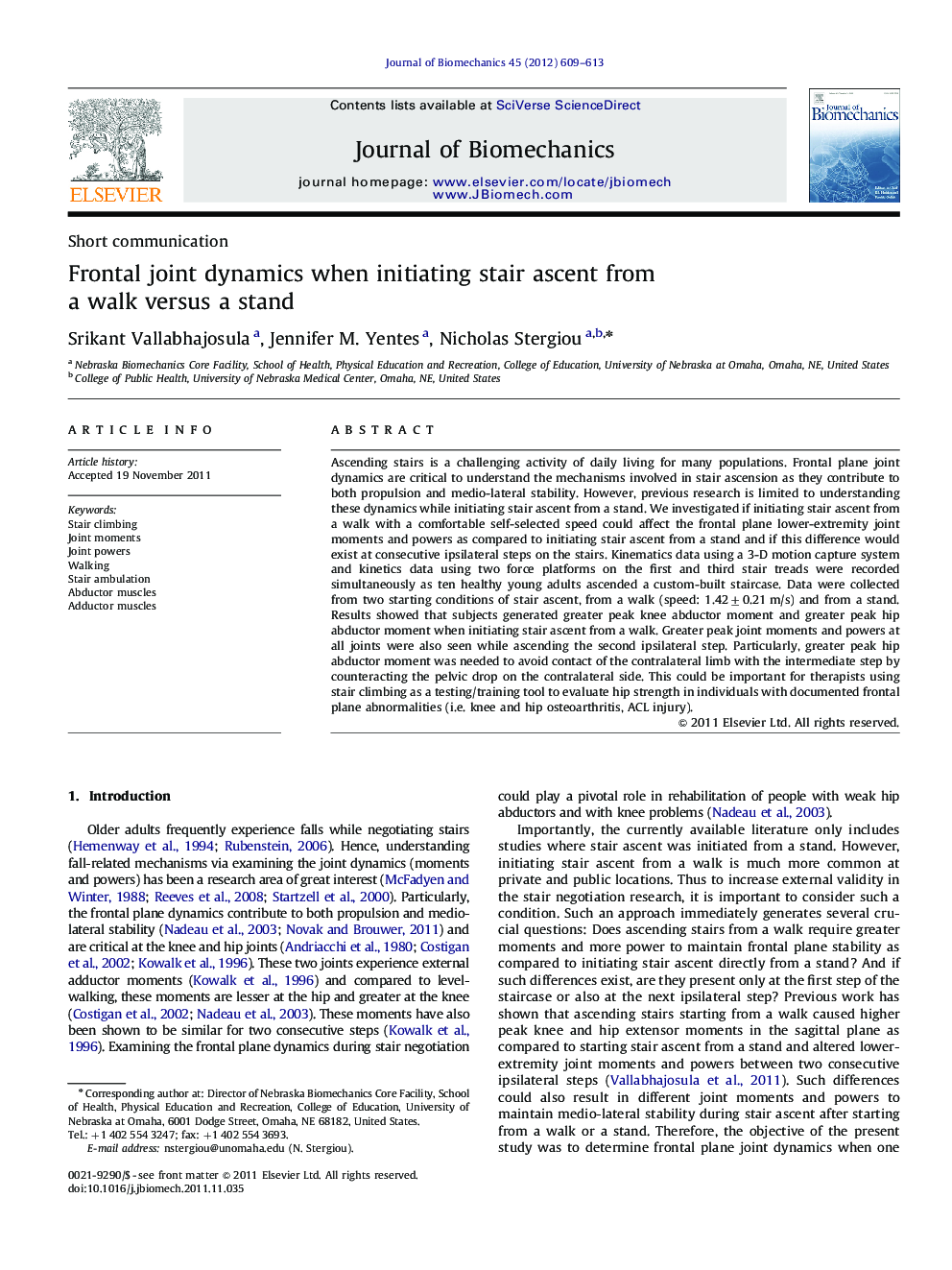| Article ID | Journal | Published Year | Pages | File Type |
|---|---|---|---|---|
| 10432691 | Journal of Biomechanics | 2012 | 5 Pages |
Abstract
Ascending stairs is a challenging activity of daily living for many populations. Frontal plane joint dynamics are critical to understand the mechanisms involved in stair ascension as they contribute to both propulsion and medio-lateral stability. However, previous research is limited to understanding these dynamics while initiating stair ascent from a stand. We investigated if initiating stair ascent from a walk with a comfortable self-selected speed could affect the frontal plane lower-extremity joint moments and powers as compared to initiating stair ascent from a stand and if this difference would exist at consecutive ipsilateral steps on the stairs. Kinematics data using a 3-D motion capture system and kinetics data using two force platforms on the first and third stair treads were recorded simultaneously as ten healthy young adults ascended a custom-built staircase. Data were collected from two starting conditions of stair ascent, from a walk (speed: 1.42±0.21 m/s) and from a stand. Results showed that subjects generated greater peak knee abductor moment and greater peak hip abductor moment when initiating stair ascent from a walk. Greater peak joint moments and powers at all joints were also seen while ascending the second ipsilateral step. Particularly, greater peak hip abductor moment was needed to avoid contact of the contralateral limb with the intermediate step by counteracting the pelvic drop on the contralateral side. This could be important for therapists using stair climbing as a testing/training tool to evaluate hip strength in individuals with documented frontal plane abnormalities (i.e. knee and hip osteoarthritis, ACL injury).
Related Topics
Physical Sciences and Engineering
Engineering
Biomedical Engineering
Authors
Srikant Vallabhajosula, Jennifer M. Yentes, Nicholas Stergiou,
